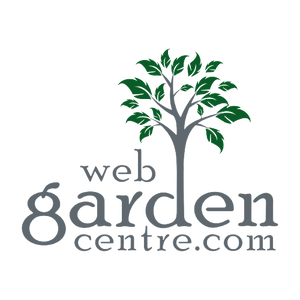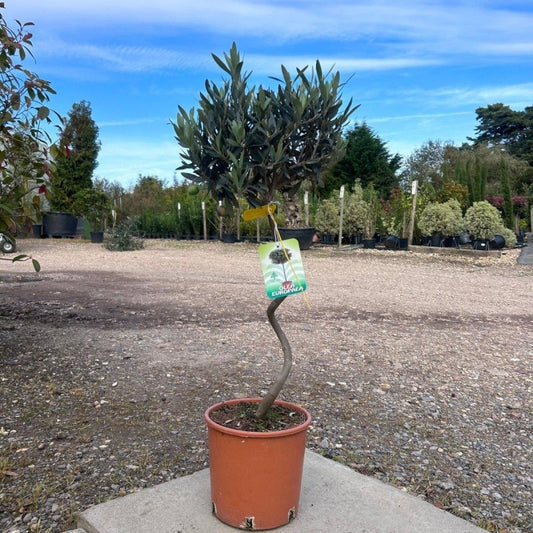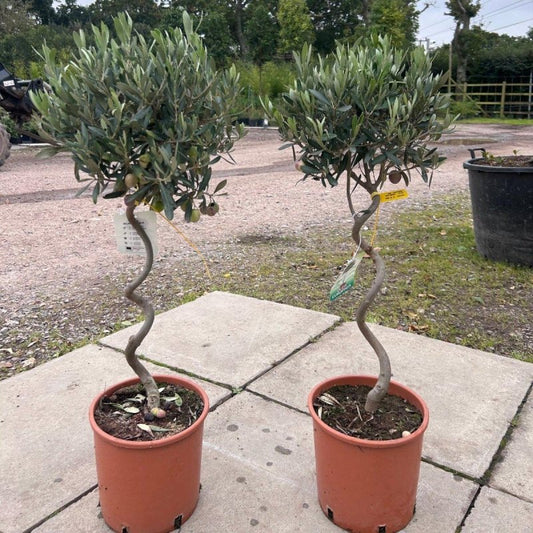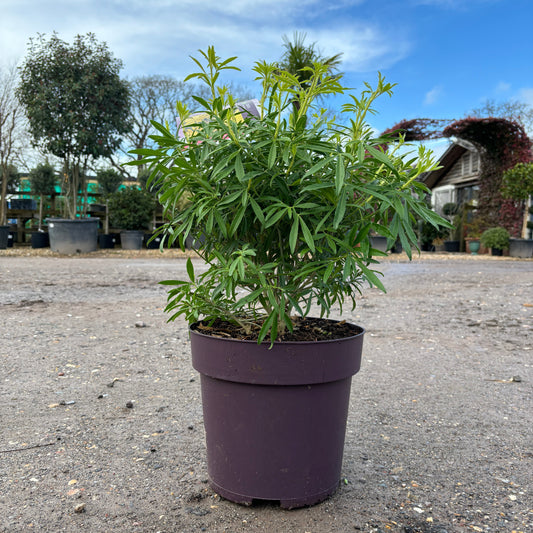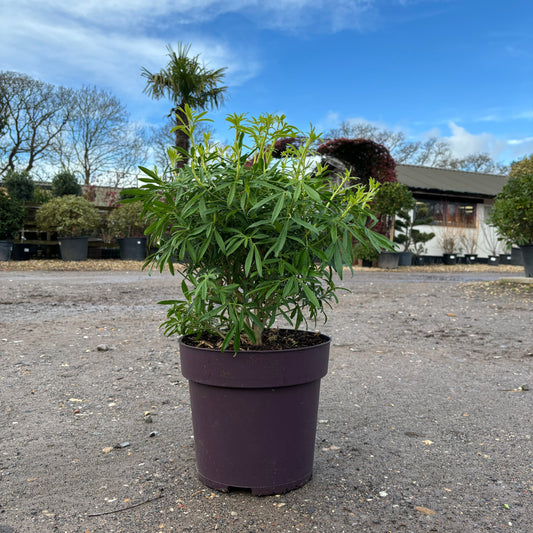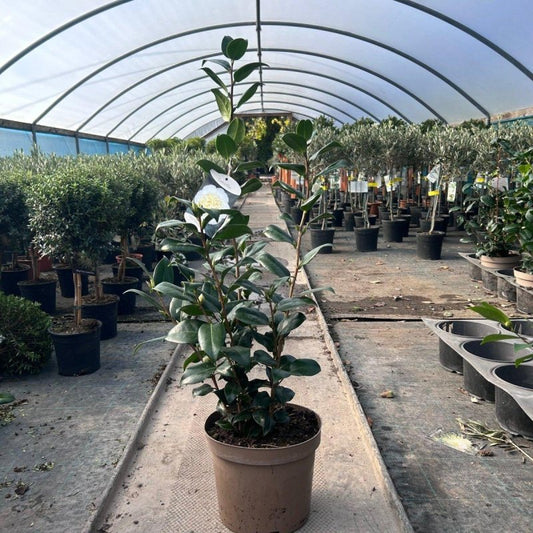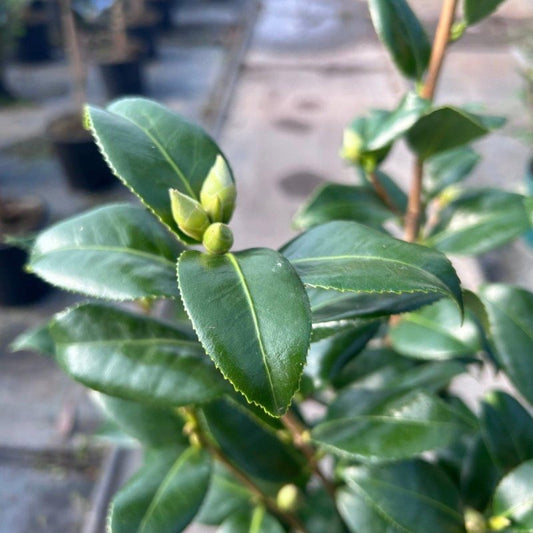Comprehensive Guide to Root Ball Hedging
Inside this Article:
- Understanding Root Ball Hedging
- Choosing the Right Plants for Your Hedge
- Best Time for Planting Root Ball Hedges
- Preparing the Planting Site
- Planting Techniques for Root Ball Hedges
- Watering and Fertilizing Your Hedge
- Mulching and Weed Control
- Pruning and Shaping Your Hedge
- Common Pests and Diseases
- Winter Care for Root Ball Hedges
- Long-term Maintenance and Care
- Landscaping with Root Ball Hedges
- Conclusion
- FAQs
Introduction to Root Ball Hedging
Root ball hedging, a traditional and effective landscaping technique, has been a cornerstone of garden design for centuries. This method involves transplanting mature hedges with their root systems intact, encased in a ball of earth and often wrapped in burlap or hessian. This guide aims to delve into the nuances of root ball hedging, offering insights into its benefits, challenges, and the sheer versatility it brings to garden landscapes. Root ball hedging is not just about creating boundaries; it's about adding structure, privacy, and aesthetic appeal to outdoor spaces. Whether you're a seasoned gardener or a novice, understanding the intricacies of root ball hedging can transform your approach to garden design and maintenance.
One of the key advantages of root ball hedging is its immediate impact. Unlike younger plants or bare-root hedges, root ball hedges are mature and offer instant privacy and structure. This is particularly beneficial for new developments or when quick screening is desired. Additionally, root ball hedges tend to be more robust and better established, which can lead to higher survival rates and quicker establishment in their new location. However, the process of selecting, planting, and caring for root ball hedges requires specific knowledge and skills. This guide will cover all these aspects, ensuring that your root ball hedge not only survives but thrives, enhancing your garden for years to come.
Understanding Root Ball Hedging
Root ball hedging is distinguished from other planting methods by its unique root system preservation soil is retained around the roots, forming a 'root ball'. This ball is often wrapped in biodegradable hessian or burlap to keep the structure intact during transport and planting. This method ensures a higher success rate compared to bare-root plants, as the root system remains largely undisturbed, reducing transplant shock and promoting quicker establishment in the new location. The environmental benefits of root ball hedging are noteworthy. These hedges provide natural habitats for wildlife, support biodiversity, and contribute to air purification and carbon sequestration. They act as natural windbreaks and sound barriers, creating a more tranquil garden environment. Moreover, root ball hedges are typically more drought-resistant and require less irrigation once established, making them a sustainable choice for eco-conscious gardeners. However, root ball hedging also presents certain challenges. The hedges are generally heavier and more cumbersome to handle than bare-root or container-grown plants, often requiring machinery or multiple people for planting. The timing of planting is also crucial, as root ball hedges are best planted when dormant, typically in late autumn to early spring. This limits the planting window and requires careful planning. Despite these challenges, the long-term benefits and aesthetic appeal of root ball hedging make it a worthwhile endeavor for gardeners and landscapers alike.
Choosing the Right Plants for Your Hedge
Selecting the appropriate species for root ball hedging is crucial for achieving your desired garden aesthetics and functionality. Factors to consider include the hedge's intended purpose (privacy, windbreak, ornamental), the local climate, soil type, and maintenance requirements. Some popular choices for root ball hedging in the UK include Boxwood (Buxus sempervirens), known for its dense, evergreen foliage and ease of shaping; Yew (Taxus baccata), prized for its lush, dark green leaves and resilience; and Laurel (Prunus laurocerasus), favored for its rapid growth and large, glossy leaves. Each species has its unique characteristics. For instance, Boxwood is ideal for formal, low hedges in parterre gardens, while Yew, with its slow growth and tolerance for heavy pruning, is perfect for tall, sculptural hedges. Laurel, being fast-growing and hardy, is excellent for quickly establishing privacy screens. It's important to research the growth habits, height, and spread of each species to ensure they align with your garden's conditions and your long-term vision. Additionally, consider the ecological impact of your choice. Native species often provide greater benefits for local wildlife, supporting a range of insects, birds, and mammals. Non-native species can be equally attractive but may require more care and may not offer the same wildlife support. Ultimately, the right choice balances aesthetic preferences, practical considerations, and ecological impact, contributing positively to both your garden and the local environment.
Best Time for Planting Root Ball Hedges
The optimal time for planting root ball hedges is during their dormant period, typically from late autumn to early spring. This timing is crucial as it allows the plants to establish themselves in their new location without the stress of supporting new growth, flowering, or fruiting. During dormancy, the plants' metabolic activities slow down, reducing their immediate water and nutrient needs and allowing the root system to gradually acclimatize and grow into the surrounding soil. Planting in autumn has the advantage of allowing the roots to establish before the ground freezes in winter. The natural rainfall during this season can also help keep the soil moist, reducing the need for manual watering. However, it's important to avoid planting in waterlogged or frozen soil, as this can hinder root establishment and lead to root rot. Spring planting, on the other hand, offers the benefit of warmer soil temperatures, which can encourage faster root growth. However, spring-planted hedges may require more attention and watering, as they need to establish themselves quickly before the onset of summer heat. Regardless of the chosen planting time, it's essential to monitor weather conditions and avoid planting during extreme weather events. Proper timing, combined with correct planting techniques and aftercare, will significantly increase the success rate of your root ball hedge, ensuring a healthy and robust boundary for your garden.
Preparing the Planting Site
Preparing the planting site is a critical step in ensuring the success of your root ball hedge. Start by assessing the soil quality; root ball hedges thrive in well-drained, fertile soil. If your soil is heavy clay or too sandy, consider amending it with organic matter such as compost or well-rotted manure to improve its structure and nutrient content. It's also important to ensure the site has adequate drainage to prevent waterlogging, which can be detrimental to the hedge's health.
Next, measure and mark out the area where the hedge will be planted. This will help you determine the number of plants needed and ensure even spacing. The spacing between plants depends on the species and the desired hedge density. Generally, a distance of 2-3 feet between plants is recommended for a dense hedge. Clear the area of weeds, rocks, and debris, and dig a trench that is wide and deep enough to accommodate the root balls comfortably. If planting a long hedge, consider using a string line to keep the hedge straight.
Before planting, it's advisable to enrich the trench with a layer of compost or well-rotted manure. This will provide the plants with a nutrient-rich environment to encourage root growth. Additionally, consider the hedge's exposure to wind and sun and plan for any necessary windbreaks or shading to protect young plants. Proper site preparation sets the foundation for a healthy and robust root ball hedge.
Planting Techniques for Root Ball Hedges
Planting root ball hedges requires care and attention to detail to ensure the best start for your plants. Begin by positioning the first plant in the trench, ensuring that the top of the root ball is level with the soil surface. This is crucial as planting too deep can suffocate the roots, while planting too shallow can expose them to air and frost.
Gently remove any ties or coverings from the root ball, taking care not to disturb the roots or soil. If the root ball is wrapped in burlap, it's usually safe to plant it as is, as burlap will decompose naturally. However, remove any synthetic materials or wires. Backfill the trench with soil, firming it gently around the root ball to eliminate air pockets. Water thoroughly after planting to settle the soil and provide moisture to the roots.
For the next plants, maintain the recommended spacing and ensure they are aligned with the first plant. Continue the process until the hedge is complete. After planting, it's beneficial to apply a layer of mulch around the base of the plants to conserve moisture, regulate soil temperature, and suppress weeds. Water the hedge regularly, especially during dry periods, until the plants are well-established.
Watering and Fertilizing Your Hedge
Proper watering and fertilization are key to the growth and health of your root ball hedge. During the first growing season, it's important to keep the soil consistently moist but not waterlogged. Deep, infrequent watering is preferable to shallow, frequent watering, as it encourages deeper root growth. The frequency of watering will depend on weather conditions, soil type, and the species of hedge. A good rule of thumb is to check the soil moisture at a depth of a few inches and water when it begins to feel dry.
When it comes to fertilizing, the first application should be in early spring, just as the plants start to grow. Use a balanced, slow-release fertilizer formulated for trees and shrubs. Be cautious not to over-fertilize, as this can lead to excessive foliage growth at the expense of root development. Apply the fertilizer according to the manufacturer's instructions, spreading it evenly around the base of each plant and watering it in well. A second application can be made in mid-summer to support continued growth, but avoid fertilizing late in the season, as this can stimulate new growth that may be damaged by frost.
Mulching and Weed Control
Mulching is an effective way to conserve soil moisture, regulate soil temperature, and suppress weed growth around your root ball hedge. Organic mulches, such as wood chips, bark, or compost, are ideal as they also add nutrients to the soil as they decompose. Apply a 2-3 inch layer of mulch around the base of the hedge, taking care not to pile it against the stems, as this can lead to rot.
Weed control is important, as weeds compete with the hedge for nutrients, water, and light. Regular weeding by hand is the most effective and environmentally friendly method. For larger areas, a landscape fabric can be laid down before planting to suppress weed growth, with holes cut for the plants. Avoid using chemical herbicides near the hedge, as they can harm the plants. Consistent mulching and weeding will keep your root ball hedge healthy and allow it to thrive.
Pruning and Shaping Your Hedge
Regular pruning is necessary to maintain the shape and density of your hedge. This section will provide tips on pruning techniques, the best time to prune, and how to shape your hedge for optimal growth and appearance.
Common Pests and Diseases
Root ball hedges can be susceptible to certain pests and diseases. This section will identify common problems, such as aphids and root rot, and offer advice on prevention and treatment.

Winter Care for Root Ball Hedges
Winter can be a challenging time for root ball hedges. This section will discuss how to protect your hedge from frost damage, including tips on wrapping, watering, and soil care during colder months.
Long-term Maintenance and Care
Ensuring the longevity of your root ball hedge requires ongoing care. This section will cover long-term maintenance practices, including rejuvenation pruning, soil health management, and monitoring for environmental stressors.
Landscaping with Root Ball Hedges
Root ball hedges can play a vital role in garden design. This section will provide ideas and inspiration for incorporating hedges into your landscaping, whether for privacy, aesthetics, or wildlife habitats.
Conclusion
Root ball hedging is a rewarding gardening practice that can enhance the beauty and functionality of your outdoor space. With the right knowledge and care, your root ball hedge can thrive for years to come.
FAQs
-
How often should I water my root ball hedge?
Watering frequency depends on the species, soil type, and weather conditions. Newly planted hedges require more frequent watering until established. -
When is the best time to prune a root ball hedge?
The ideal pruning time varies by species but is generally in late winter or early spring before new growth begins. -
Can root ball hedges be planted in containers?
Some smaller hedge species can be successfully grown in containers, provided they have adequate space and care. -
How do I protect my hedge from frost damage?
Wrapping with horticultural fleece and ensuring proper soil drainage can help protect your hedge in winter. -
What are the signs of over-watering in hedges?
Signs include yellowing leaves, soft or rotting roots, and a general decline in plant health.
Introduction to Root Ball Hedging
Root ball hedging, a traditional and effective landscaping technique, has been a cornerstone of garden design for centuries. This method involves transplanting mature hedges with their root systems intact, encased in a ball of earth and often wrapped in burlap or hessian. This guide aims to delve into the nuances of root ball hedging, offering insights into its benefits, challenges, and the sheer versatility it brings to garden landscapes. Root ball hedging is not just about creating boundaries; it's about adding structure, privacy, and aesthetic appeal to outdoor spaces. Whether you're a seasoned gardener or a novice, understanding the intricacies of root ball hedging can transform your approach to garden design and maintenance.
One of the key advantages of root ball hedging is its immediate impact. Unlike younger plants or bare-root hedges, root ball hedges are mature and offer instant privacy and structure. This is particularly beneficial for new developments or when quick screening is desired. Additionally, root ball hedges tend to be more robust and better established, which can lead to higher survival rates and quicker establishment in their new location. However, the process of selecting, planting, and caring for root ball hedges requires specific knowledge and skills. This guide will cover all these aspects, ensuring that your root ball hedge not only survives but thrives, enhancing your garden for years to come.
Understanding Root Ball Hedging
Root ball hedging is distinguished from other planting methods by its unique root system preservation soil is retained around the roots, forming a 'root ball'. This ball is often wrapped in biodegradable hessian or burlap to keep the structure intact during transport and planting. This method ensures a higher success rate compared to bare-root plants, as the root system remains largely undisturbed, reducing transplant shock and promoting quicker establishment in the new location. The environmental benefits of root ball hedging are noteworthy. These hedges provide natural habitats for wildlife, support biodiversity, and contribute to air purification and carbon sequestration. They act as natural windbreaks and sound barriers, creating a more tranquil garden environment. Moreover, root ball hedges are typically more drought-resistant and require less irrigation once established, making them a sustainable choice for eco-conscious gardeners. However, root ball hedging also presents certain challenges. The hedges are generally heavier and more cumbersome to handle than bare-root or container-grown plants, often requiring machinery or multiple people for planting. The timing of planting is also crucial, as root ball hedges are best planted when dormant, typically in late autumn to early spring. This limits the planting window and requires careful planning. Despite these challenges, the long-term benefits and aesthetic appeal of root ball hedging make it a worthwhile endeavor for gardeners and landscapers alike.
Choosing the Right Plants for Your Hedge
Selecting the appropriate species for root ball hedging is crucial for achieving your desired garden aesthetics and functionality. Factors to consider include the hedge's intended purpose (privacy, windbreak, ornamental), the local climate, soil type, and maintenance requirements. Some popular choices for root ball hedging in the UK include Boxwood (Buxus sempervirens), known for its dense, evergreen foliage and ease of shaping; Yew (Taxus baccata), prized for its lush, dark green leaves and resilience; and Laurel (Prunus laurocerasus), favored for its rapid growth and large, glossy leaves. Each species has its unique characteristics. For instance, Boxwood is ideal for formal, low hedges in parterre gardens, while Yew, with its slow growth and tolerance for heavy pruning, is perfect for tall, sculptural hedges. Laurel, being fast-growing and hardy, is excellent for quickly establishing privacy screens. It's important to research the growth habits, height, and spread of each species to ensure they align with your garden's conditions and your long-term vision. Additionally, consider the ecological impact of your choice. Native species often provide greater benefits for local wildlife, supporting a range of insects, birds, and mammals. Non-native species can be equally attractive but may require more care and may not offer the same wildlife support. Ultimately, the right choice balances aesthetic preferences, practical considerations, and ecological impact, contributing positively to both your garden and the local environment.
Best Time for Planting Root Ball Hedges
The optimal time for planting root ball hedges is during their dormant period, typically from late autumn to early spring. This timing is crucial as it allows the plants to establish themselves in their new location without the stress of supporting new growth, flowering, or fruiting. During dormancy, the plants' metabolic activities slow down, reducing their immediate water and nutrient needs and allowing the root system to gradually acclimatize and grow into the surrounding soil. Planting in autumn has the advantage of allowing the roots to establish before the ground freezes in winter. The natural rainfall during this season can also help keep the soil moist, reducing the need for manual watering. However, it's important to avoid planting in waterlogged or frozen soil, as this can hinder root establishment and lead to root rot. Spring planting, on the other hand, offers the benefit of warmer soil temperatures, which can encourage faster root growth. However, spring-planted hedges may require more attention and watering, as they need to establish themselves quickly before the onset of summer heat. Regardless of the chosen planting time, it's essential to monitor weather conditions and avoid planting during extreme weather events. Proper timing, combined with correct planting techniques and aftercare, will significantly increase the success rate of your root ball hedge, ensuring a healthy and robust boundary for your garden.
Preparing the Planting Site
Preparing the planting site is a critical step in ensuring the success of your root ball hedge. Start by assessing the soil quality; root ball hedges thrive in well-drained, fertile soil. If your soil is heavy clay or too sandy, consider amending it with organic matter such as compost or well-rotted manure to improve its structure and nutrient content. It's also important to ensure the site has adequate drainage to prevent waterlogging, which can be detrimental to the hedge's health.
Next, measure and mark out the area where the hedge will be planted. This will help you determine the number of plants needed and ensure even spacing. The spacing between plants depends on the species and the desired hedge density. Generally, a distance of 2-3 feet between plants is recommended for a dense hedge. Clear the area of weeds, rocks, and debris, and dig a trench that is wide and deep enough to accommodate the root balls comfortably. If planting a long hedge, consider using a string line to keep the hedge straight.
Before planting, it's advisable to enrich the trench with a layer of compost or well-rotted manure. This will provide the plants with a nutrient-rich environment to encourage root growth. Additionally, consider the hedge's exposure to wind and sun and plan for any necessary windbreaks or shading to protect young plants. Proper site preparation sets the foundation for a healthy and robust root ball hedge.
Planting Techniques for Root Ball Hedges
Planting root ball hedges requires care and attention to detail to ensure the best start for your plants. Begin by positioning the first plant in the trench, ensuring that the top of the root ball is level with the soil surface. This is crucial as planting too deep can suffocate the roots, while planting too shallow can expose them to air and frost.
Gently remove any ties or coverings from the root ball, taking care not to disturb the roots or soil. If the root ball is wrapped in burlap, it's usually safe to plant it as is, as burlap will decompose naturally. However, remove any synthetic materials or wires. Backfill the trench with soil, firming it gently around the root ball to eliminate air pockets. Water thoroughly after planting to settle the soil and provide moisture to the roots.
For the next plants, maintain the recommended spacing and ensure they are aligned with the first plant. Continue the process until the hedge is complete. After planting, it's beneficial to apply a layer of mulch around the base of the plants to conserve moisture, regulate soil temperature, and suppress weeds. Water the hedge regularly, especially during dry periods, until the plants are well-established.
Watering and Fertilizing Your Hedge
Proper watering and fertilization are key to the growth and health of your root ball hedge. During the first growing season, it's important to keep the soil consistently moist but not waterlogged. Deep, infrequent watering is preferable to shallow, frequent watering, as it encourages deeper root growth. The frequency of watering will depend on weather conditions, soil type, and the species of hedge. A good rule of thumb is to check the soil moisture at a depth of a few inches and water when it begins to feel dry.
When it comes to fertilizing, the first application should be in early spring, just as the plants start to grow. Use a balanced, slow-release fertilizer formulated for trees and shrubs. Be cautious not to over-fertilize, as this can lead to excessive foliage growth at the expense of root development. Apply the fertilizer according to the manufacturer's instructions, spreading it evenly around the base of each plant and watering it in well. A second application can be made in mid-summer to support continued growth, but avoid fertilizing late in the season, as this can stimulate new growth that may be damaged by frost.
Mulching and Weed Control
Mulching is an effective way to conserve soil moisture, regulate soil temperature, and suppress weed growth around your root ball hedge. Organic mulches, such as wood chips, bark, or compost, are ideal as they also add nutrients to the soil as they decompose. Apply a 2-3 inch layer of mulch around the base of the hedge, taking care not to pile it against the stems, as this can lead to rot.
Weed control is important, as weeds compete with the hedge for nutrients, water, and light. Regular weeding by hand is the most effective and environmentally friendly method. For larger areas, a landscape fabric can be laid down before planting to suppress weed growth, with holes cut for the plants. Avoid using chemical herbicides near the hedge, as they can harm the plants. Consistent mulching and weeding will keep your root ball hedge healthy and allow it to thrive.
Pruning and Shaping Your Hedge
Regular pruning is necessary to maintain the shape and density of your hedge. This section will provide tips on pruning techniques, the best time to prune, and how to shape your hedge for optimal growth and appearance.
Common Pests and Diseases
Root ball hedges can be susceptible to certain pests and diseases. This section will identify common problems, such as aphids and root rot, and offer advice on prevention and treatment.

Winter Care for Root Ball Hedges
Winter can be a challenging time for root ball hedges. This section will discuss how to protect your hedge from frost damage, including tips on wrapping, watering, and soil care during colder months.
Long-term Maintenance and Care
Ensuring the longevity of your root ball hedge requires ongoing care. This section will cover long-term maintenance practices, including rejuvenation pruning, soil health management, and monitoring for environmental stressors.
Landscaping with Root Ball Hedges
Root ball hedges can play a vital role in garden design. This section will provide ideas and inspiration for incorporating hedges into your landscaping, whether for privacy, aesthetics, or wildlife habitats.
Conclusion
Root ball hedging is a rewarding gardening practice that can enhance the beauty and functionality of your outdoor space. With the right knowledge and care, your root ball hedge can thrive for years to come.
FAQs
-
How often should I water my root ball hedge?
Watering frequency depends on the species, soil type, and weather conditions. Newly planted hedges require more frequent watering until established. -
When is the best time to prune a root ball hedge?
The ideal pruning time varies by species but is generally in late winter or early spring before new growth begins. -
Can root ball hedges be planted in containers?
Some smaller hedge species can be successfully grown in containers, provided they have adequate space and care. -
How do I protect my hedge from frost damage?
Wrapping with horticultural fleece and ensuring proper soil drainage can help protect your hedge in winter. -
What are the signs of over-watering in hedges?
Signs include yellowing leaves, soft or rotting roots, and a general decline in plant health.
Trending Now
- From £45.00
- From £45.00
- Unit price
- per
- From £45.00
- From £45.00
- Unit price
- per
- From £45.00
- From £45.00
- Unit price
- per
- From £118.00
£104.97- From £118.00
- Unit price
- per
- £8.00
- £8.00
- Unit price
- per
- £20.00
- £20.00
- Unit price
- per
- £8.00
- £8.00
- Unit price
- per
- £16.00
- £16.00
- Unit price
- per
- Choosing a selection results in a full page refresh.

